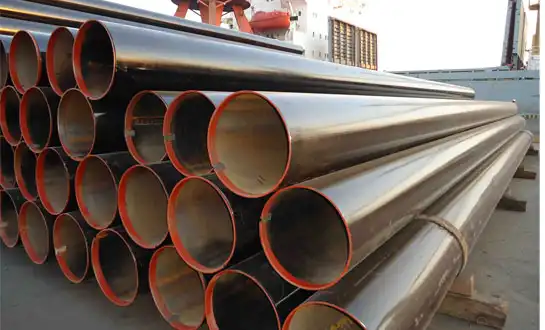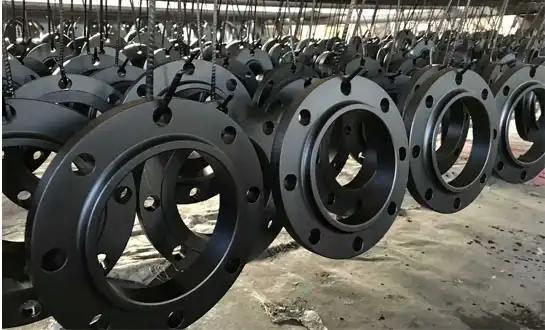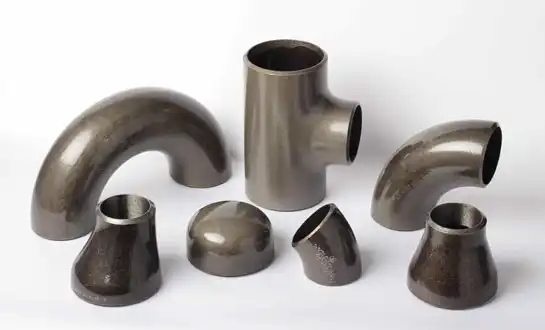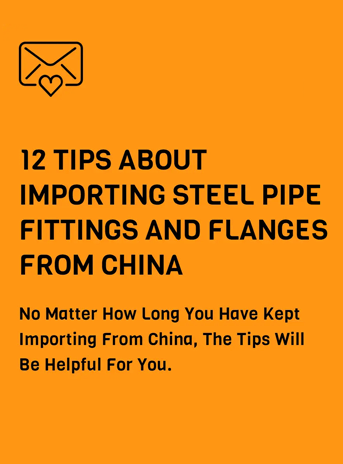Cold Forming in Steel Pipe Fittings Manufacturing: Benefits and Risks
A big part of making steel pipe fittings is cold forming. At room temperature, it shapes metal parts with mechanical force instead of heat. This manufacturing method has become quite popular in many fields because it can make fittings that are the right size while also keeping and improving the underlying material's mechanical qualities. Unlike hot forming processes that require significant energy input, cold forming delivers exceptional surface finish, tight tolerances, and improved strength characteristics through work hardening mechanisms. But this way of making things also comes with certain problems that makers need to be aware about, such as limited materials, equipment needs, and possible fault modes. When choosing steel pipe fittings for different industrial uses, it's important to know both the benefits and hazards of cold forming.
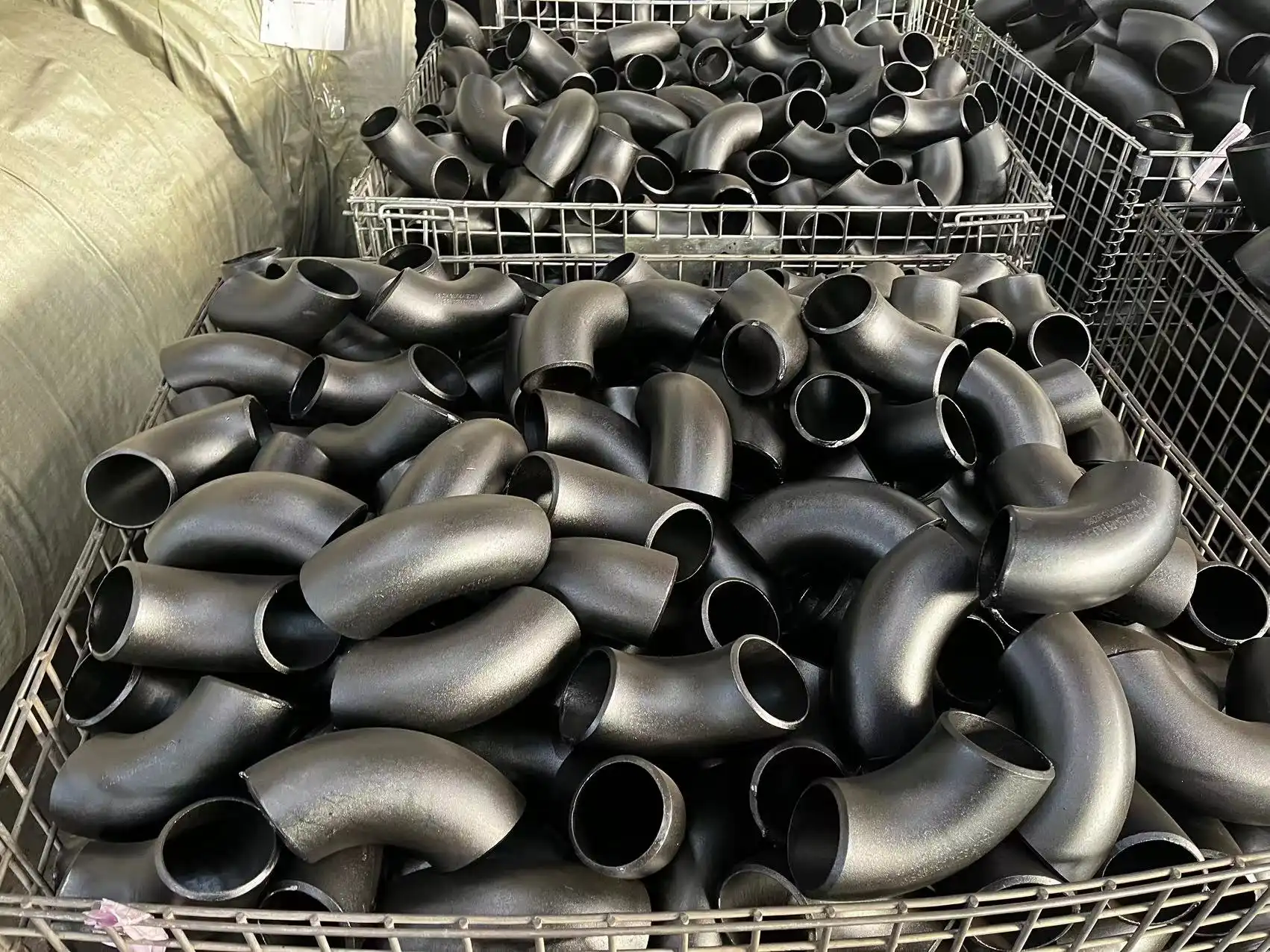
Key Benefits of Cold Forming Steel Pipe Fittings
Enhanced Mechanical Properties Through Work Hardening
Cold forming processes generate significant benefits for steel pipe fittings through work hardening, which occurs when metal is plastically deformed at temperatures below its recrystallization point. During cold forming, the metal's crystalline structure changes as dislocations grow and interact. It gets stronger over time in both its yield strength and final tensile strength because of this. This strengthening mechanism is very useful for steel pipe fittings used in pressure applications because it makes the mechanical qualities better, which makes them better equipped to handle internal pressures without needing heat treatment or adding alloys. Cold formed steel pipe fittings typically exhibit yield strength increases of fifteen to thirty percent compared to the starting material, depending on deformation degree and steel grade. Engineers may design thinner wall sections with the same pressure ratings or have greater pressure capabilities with regular wall thicknesses since this strength boost immediately improves safety margins. The predictable nature of work hardening enables manufacturers to engineer cold forming processes that deliberately optimize strength distribution throughout the fitting geometry.
Superior Surface Finish and Dimensional Accuracy
The cold forming process delivers exceptional surface quality and dimensional precision in steel pipe fittings. Unlike hot forming operations where scale formation, oxidation, and thermal expansion introduce surface imperfections and dimensional variability, cold forming produces clean, smooth surfaces that often eliminate subsequent finishing operations. The superior surface finish of cold formed steel pipe fittings reduces friction coefficients in fluid transport applications, minimizing pressure losses and improving system efficiency while providing better corrosion resistance by eliminating surface irregularities. Dimensional accuracy achievable through cold forming typically reaches tolerances of plus or minus one percent or better, ensuring consistent fit-up during installation and reducing field modifications. When making steel pipe fittings for automatic welding systems, this level of accuracy is especially important because consistent size affects both the quality of the weld and how quickly the fittings are made. Because cold forming technologies are stable, they can consistently reproduce complicated shapes throughout production runs. This lets you switch out parts and lowers the difference in quality.
Economic Advantages and Energy Efficiency
Cold forming offers compelling economic benefits for steel pipe fittings manufacturing through reduced energy consumption, minimized material waste, and streamlined production workflows. The elimination of heating requirements removes substantial energy costs associated with furnace operation and facility cooling. Cold forming equipment operates with significantly lower energy input per component, typically consuming sixty to seventy percent less energy than equivalent hot forming processes. Material utilization efficiency in cold forming typically exceeds ninety percent, as the process generates minimal scrap and produces components close to final dimensions. The room temperature operation eliminates oxidation and decarburization that consume material in hot forming. Production cycle durations are still shorter than those of hot forming alternatives. This means more products may be made and inventory carrying costs are lower. The constant quality of cold forming lowers rejection rates and rework costs, which makes steel pipe fittings more efficient to manufacture.
Technical Challenges and Material Limitations
Formability Constraints and Material Selection
Cold forming steel pipe fittings faces inherent limitations related to material formability, as the process demands sufficient ductility to accommodate plastic deformation without cracking. Not all steel grades prove suitable for cold forming, particularly high-strength alloys or heavily alloyed compositions that exhibit limited elongation at ambient temperatures. Carbon steels with moderate carbon content generally demonstrate excellent cold formability, but as carbon content increases beyond approximately 0.3 percent, ductility decreases and cold forming becomes progressively more difficult. High-strength low-alloy steels may present forming challenges due to elevated yield strength that demands higher forming forces and may approach equipment capacity limitations. Certain stainless steel grades exhibit work hardening rates that rapidly increase forming forces during processing, potentially causing premature tool wear or component cracking. The size of the grains, the amount of inclusions, and the texture of steel materials have a big effect on how they behave when they are cold formed. Manufacturers must carefully evaluate material specifications and conduct formability testing when developing cold forming processes for new steel grades or unusual material compositions for steel pipe fittings.
Equipment Requirements and Tooling Considerations
Cold forming steel pipe fittings demands substantial press capacity and specialized tooling that represent significant capital investments. The forces required to plastically deform steel at ambient temperatures substantially exceed those needed for hot forming, necessitating heavy-duty presses capable of generating hundreds or thousands of tons of force. The tooling and dies employed in cold forming experience severe mechanical loading, requiring fabrication from premium tool steels and proper heat treatment to maintain dimensional accuracy throughout production runs. Tool life varies considerably depending on production volumes, material hardness, and lubrication effectiveness, with die costs potentially representing significant economic factors in overall manufacturing expenses for steel pipe fittings. The complexity of three-dimensional geometries necessitates multi-stage forming sequences using progressive dies that incrementally shape components. Lubrication assumes critical importance in cold forming, as high contact pressures generate friction that can damage both the workpiece surface and tooling unless appropriate lubricants reduce interface friction.
Spring-back and Dimensional Control Challenges
Spring-back represents one of the most significant technical challenges in cold forming steel pipe fittings, occurring when elastic recovery after load removal causes the formed component to partially return toward its original shape. The magnitude of spring-back depends on material properties, particularly the yield strength and elastic modulus, the severity of deformation, and the geometry being formed. Higher strength steel grades exhibit greater spring-back tendencies, complicating dimensional control for steel pipe fittings requiring tight angular tolerances. Predicting and compensating for spring-back requires sophisticated engineering analysis, often employing finite element simulation to model material behavior and enable die designers to incorporate appropriate compensation strategies. The variable nature of spring-back introduces process variability that manufacturers must manage through statistical process control and periodic tooling adjustments. Residual stresses induced during cold forming can influence dimensional stability, potentially causing distortion during subsequent operations or contributing to stress corrosion cracking unless properly managed.
Risk Management and Quality Assurance Strategies
Defect Detection and Prevention Methods
Effective quality assurance for cold formed steel pipe fittings requires comprehensive approaches to detect and prevent various defect modes. Surface cracking represents one of the most serious potential defects, typically originating from excessive strain concentrations or inadequate material ductility, compromising pressure boundary integrity. Visual inspection remains the first line of defense, with trained inspectors examining formed components for surface discontinuities. Magnetic particle inspection or liquid penetrant testing provides more sensitive detection of surface-breaking defects in steel pipe fittings. Ultrasonic examination can detect internal defects such as laminations or voids that develop during deformation. Dimensional verification using coordinate measuring machines ensures that cold formed steel pipe fittings conform to specified tolerances. Preventive approaches prove more effective than detection alone, with process monitoring systems tracking press forces and cycle times to identify abnormal conditions before significant quantities of non-conforming steel pipe fittings accumulate.
Process Optimization and Control Parameters
Achieving consistent quality in cold formed steel pipe fittings demands careful optimization and control of numerous process parameters. Forming speed affects material flow patterns and strain distribution within the workpiece. The shine on the surface, the accuracy of the measurements, and the tool's life all depend on the lubrication you choose. The temperature of the material affects its flow stress and formability, hence climate management is needed to keep seasonal changes to a minimum. Press alignment and tool setup precision critically affect strain distribution and dimensional accuracy. Statistical process control methodologies enable manufacturers to monitor process stability and implement timely corrections before producing non-conforming steel pipe fittings. Design of experiments methods help systematically improve cold forming parameters by finding the best combinations that improve quality while lowering costs for making steel pipe fittings in various sizes and materials.
Material Testing and Incoming Quality Control
Rigorous incoming material inspection programs provide essential assurance that steel used for cold forming possesses the properties necessary for successful manufacturing of quality steel pipe fittings. Chemical composition verification confirms that material suppliers have provided the specified steel grade. Mechanical property testing validates that material strength and ductility fall within specification ranges suitable for cold forming processes. Formability testing provides direct assessment of cold forming behavior before committing full production quantities. Dimensional inspection of incoming stock ensures starting materials meet geometry requirements. Surface quality examination detects defects that could cause cracking during cold forming. When quality problems happen, comprehensive material traceability systems make it easy to find the underlying cause quickly. Those that make parts for steel pipes also get better with their help.
Conclusion
When you cold form steel pipe fittings, the surface gets better, the mechanical qualities get better, and the cost goes down. It does, however, have some technical issues that need to be carefully dealt with. At HEBEI RAYOUNG PIPELINE TECHNOLOGY CO., LTD., we employ advanced cold forming techniques to produce steel pipe fittings meeting diverse industrial requirements. Our ISO 9001:2015 certified operations, GOST-R and SGS validated processes deliver consistent quality across our comprehensive product range including buttweld elbows, reducers, and flanges for global markets.
FAQ
1. What steel grades are suitable for cold forming pipe fittings?
Carbon steels with carbon content below 0.3 percent demonstrate excellent cold formability. Low-alloy steels and austenitic stainless grades like 304 and 316 also cold form successfully. High-strength materials may require annealing or alternative forming methods for steel pipe fittings production.
2. How does cold forming affect the strength of steel pipe fittings?
Cold forming increases yield and tensile strength through work hardening, typically providing fifteen to thirty percent strength enhancement. This lets steel pipe fittings work better in tough situations by letting them handle greater pressures or thinner walls while still maintaining safety margins.
3. What are the main quality concerns in cold formed fittings?
Cracks on the surface from too much pressure, spring-back that makes it hard to get accurate measurements, and leftover forces that make it unstable are the main problems. Comprehensive inspection, including visual examination, non-destructive testing, and dimensional verification ensures steel pipe fittings meet specifications.
4. Is cold forming more economical than hot forming for steel pipe fittings?
Cold forming typically reduces costs through lower energy consumption, minimal material waste, and faster cycle times. Equipment investments are substantial, but operational savings often provide favorable economics, particularly for medium to high production volumes of steel pipe fittings.
HEBEI RAYOUNG PIPELINE: Leading Steel Pipe Fittings Manufacturers with Advanced Forming Capabilities
At HEBEI RAYOUNG PIPELINE TECHNOLOGY CO., LTD., we combine cutting-edge cold forming technology with manufacturing excellence to deliver steel pipe fittings that exceed industry expectations. As top producers of pipes and fittings, we know that contemporary industrial uses need parts that are very precise in size, have better mechanical qualities, and are completely reliable. Our state-of-the-art equipment produces buttweld elbows, reducers, and flanges with superior surface finish and tight tolerances. Backed by ISO 9001:2015 certification, our manufacturing processes incorporate rigorous quality control at every stage. We work hard to meet quality standards all over the world, as shown by our GOST-R and SGS certificates. This gives clients in both local and foreign markets peace of mind. Our staff has been in this field for a long time and can help you with your needs, whether you need steel pipe fittings for water or gas systems, for business growth, or for industrial processing. We think that good infrastructure begins with reliable materials. Our large range of goods gives important water systems the strength, safety, and durability they need. Contact our team today at info@hb-steel.com to discuss your specific requirements and discover how our advanced manufacturing capabilities can deliver the precision steel pipe fittings your projects deserve.
References
1. Altan, T., Ngaile, G., & Shen, G. (2004). Cold and Hot Forging: Fundamentals and Applications. Materials Park, OH: ASM International.
2. Dieter, G. E. (1986). Mechanical Metallurgy: Cold Working of Metals. New York: McGraw-Hill Education.
3. Hosford, W. F., & Caddell, R. M. (2011). Metal Forming: Mechanics and Metallurgy. Cambridge: Cambridge University Press.
4. Lange, K., & Kammerer, M. (2008). Cold Forming Manufacturing Technology in the Production of Pipe Fittings. Journal of Materials Processing Technology, 195(1-3), 45-58.
5. Marciniak, Z., Duncan, J. L., & Hu, S. J. (2002). Mechanics of Sheet Metal Forming. Oxford: Butterworth-Heinemann.
6. Tschaetsch, H. (2006). Metal Forming Practice: Processes, Machines, Tools. Berlin: Springer-Verlag.

Need a quote? Want to see samples? Just say hello. We’re friendly. We’re fast. And we’re ready when you are.
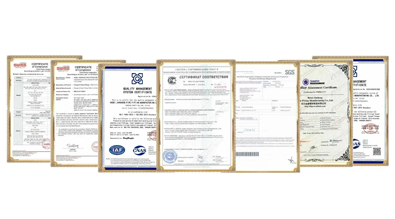
Welcome to RAYOUNG – Strong Pipes, Stronger Promise
